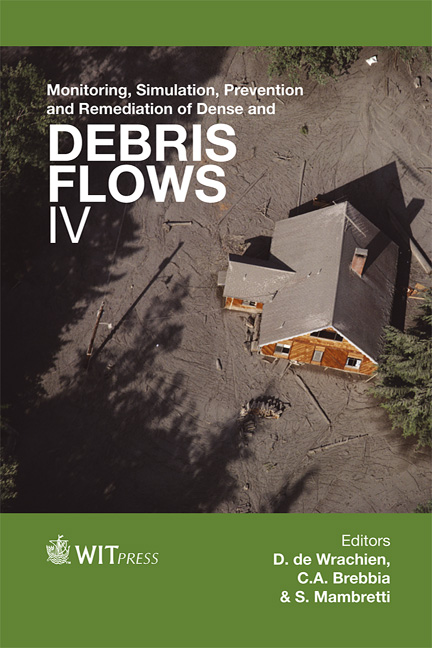Investigating Rainfall-induced Unsaturated Soil Slope Instability: A Meshfree Numerical Approach
Price
Free (open access)
Transaction
Volume
73
Pages
12
Page Range
231 - 242
Published
2012
Size
434 kb
Paper DOI
10.2495/DEB120201
Copyright
WIT Press
Author(s)
L. M. Dakssa & I. S. H. Harahap
Abstract
It is a common phenomenon, especially, in tropical and subtropical regions that a standing soil slope fails during or immediately after heavy or prolonged rainfall events. A possible reason is that rainwater infiltration affects the pore-water pressure distribution in soil slope. While negative pore-water pressures add to the stability of soil slopes, positive pore-water pressures disrupt the existing stability. The changes in pore-water pressure in the soil are handled through infiltration/seepage analyses. Conventionally, numerical approach to seepage analysis is carried out by the mesh-based finite element software SEEP/W. More recent studies, however, indicate SEEP/W software yields appalling numerical oscillations near the wetting fronts as seepage progresses through unsaturated soils. In view of seeking an alternative approach, in this paper, a meshfree smoothed particle hydrodynamics (SPH) method was used to simulate infiltration into and seepage through unsaturated soil slope. The governing flow equation was developed by incorporating seepage force into the Navier-Stokes equation. Numerical examples were executed to test the capability of the SPH scheme in mimicking both infiltration and seepage. It was confirmed that the SPH method is versatile in that new physics of flow can be incorporated during program coding with ease. Besides, the simulation results indicate that SPH numerical approach can be considered as a better seepage analysis method as, unlike the mesh-based finite element, it does not suffer from mesh distortions when used for simulating large deformations - the case in landslides. Keywords: continuum mechanics, hydraulic conductivity, infiltration, large deformation, matric suction, meshfree numerical methods, seepage, SPH.
Keywords
continuum mechanics, hydraulic conductivity, infiltration, large deformation, matric suction, meshfree numerical methods, seepage, SPH.





